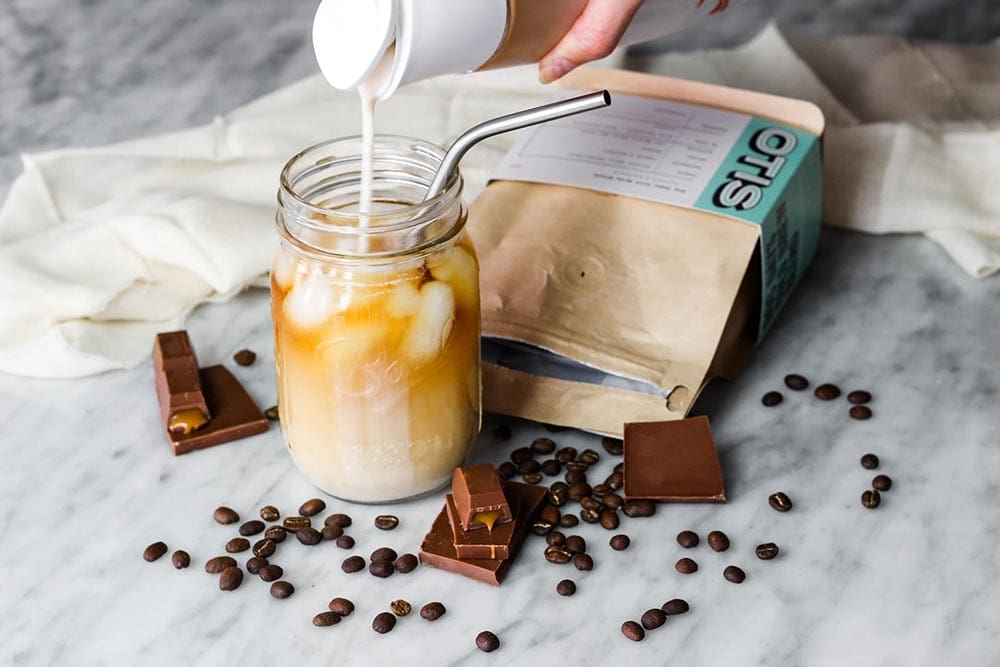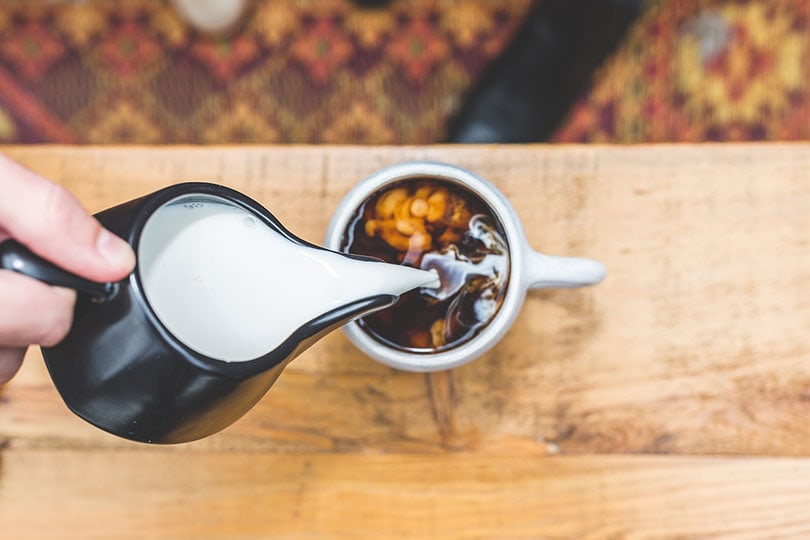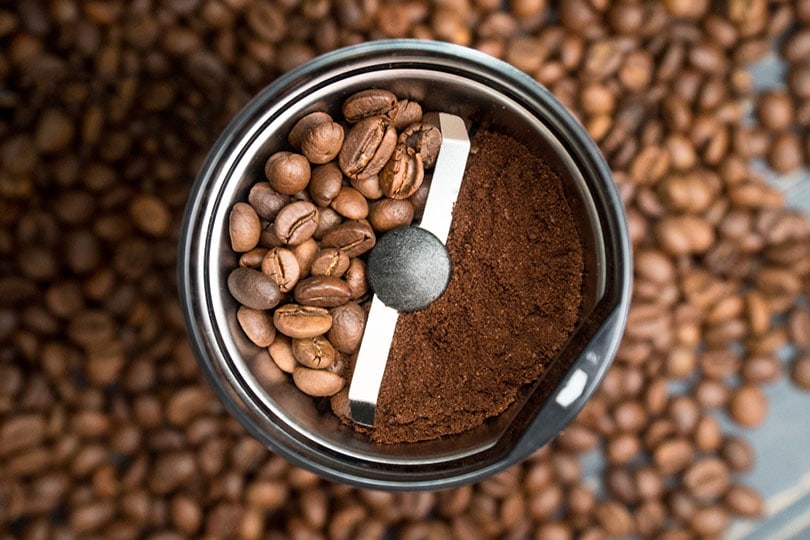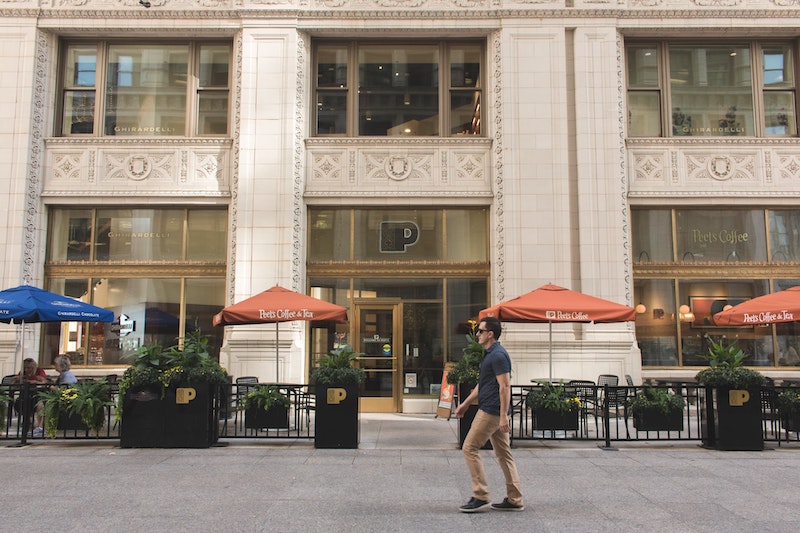
Adding creamer to coffee is as popular as adding ice cubes to soda beverages, it’s simply what people do. Whether it is regular whole milk or non-dairy creamers such as almond milk, store-bought creamers, or coconut milk, the cream just makes the semi-bitter taste of coffee taste more palatable.
But being that most of us drink coffee to get a quick boost of caffeine to start our day, the question of “Does creamer dilute caffeine?” seems very valid. So, let’s discuss what we’ve found. Creamer does dilute the caffeine per ounce of coffee.

So, Does Creamer Dilute Caffeine?
Creamer can dilute the concentration of caffeine in your coffee, in the same way that large amounts of ice will dilute the flavor. This is why espresso has more caffeine than your average latte. Your average 8-ounce cup of black coffee contains anywhere from 95 to 200 milligrams (mg) of caffeine, depending on the blend.
A latte may have about 45-60 mg of caffeine. And, most coffee drinkers add anywhere from 1-5 tablespoons of cream to their drink. So, if you are adding a significant amount of cream, you are in a sense, diluting the caffeine content–though in many cases it’s only by a negligible amount.
If you’re making your own coffee, you likely won’t notice a difference. But if you’re a latte fan, you’re likely not getting the same amount of caffeine that you would if you’d prepare your own coffee at home–where you can measure the coffee and cream.

Ways To Reduce Caffeine In Coffee
Looking to lower your daily caffeine intake without sacrificing your coffee consumption? Well, there is hope, friends. There are several easy ways to lower caffeine in your coffee without much effort.
Choose Different Beans
You can start by selecting coffee beans with a low caffeine content. The two most popular types of low-caffeine coffee beans are Robusta beans and Arabica. Although they are less expensive than Arabica beans, Robusta beans have a slightly higher caffeine content.
Arabica beans, on the other hand, have a sweeter and much milder taste–making them perfect for coffee fans who prefer fewer bitter blends. These beans will be flavored with sugar, berries, or other fruits. Robusta has a darker, more intense, and nuttier taste. And note that you can also simply go with a decaffeinated product.
Use Coarse Grounds
Grind your own coffee. Coffee beans that are more finely ground will release more caffeine through the grinding process. Also, to reduce caffeine, use coarse coffee beans. If you prefer to grind your coffee beans yourself, grind them coarsely (buy a grinder and set it to “coarse” or lessen the grind time) to lower caffeine.

Shorten the Brewing Time
Switch up the way that you brew your coffee or find mild brews at your local cafe. Coffee extracts more caffeine the longer it is brewed. For a less potent cup, simply reduce the time it takes to brew your coffee.
Reduce Your Serving Size
This may seem obvious, but the serving size also affects the amount of caffeine that you consume. The serving size directly affects the amount of caffeine in a cup. A 16-ounce cup will of course have twice the amount of caffeine than an 8-ounce cup.
A 1-ounce espresso has 45 to 75 mg of caffeine, while a larger cup will contain double this amount. So, next time you’re at Starbucks, simply switch from the “venti” to the “tall”.
Use Fewer Coffee Grounds
Reduce the caffeine content by brewing your coffee with fewer coffee grounds. This can give a strong cup of coffee a milder flavor.
You can do this by adding fewer coffee grounds to your coffee maker, but the same amount of water. Also, try using the same amount of beans and just increase the water volume to dilute the caffeine.
Get A Cold Brew
Brewing methods affect the amount of caffeine released in coffee beans, which explains why so many cafes bring attention to their specific brewing methods. Cold-brewed coffee has almost 25-30% less caffeine than regular hot-brewed coffee. To reduce caffeine levels, you can switch to cold brew.


How To Handle A Caffeine Overdose
Caffeine overdoses are actually pretty rare. When people refer to a caffeine “overdose”, they’re more so referring to the effects of consuming too much caffeine within a short period of time. This has been linked with symptoms including nervousness, anxiety, headaches, heart palpitations, and an inability to concentrate.
Here are some things you can do to get better quickly if you experience these or other symptoms after consuming large amounts of caffeine.
Do Not Consume Any More Caffeine
First, don’t consume any more caffeine. Although this may seem obvious, note that caffeine can be found hidden in many other foods and beverages. Avoid dark chocolates, sodas, and all types of teas. Having even a small amount of caffeine can make your symptoms worse and take longer to get rid of.
Drink Water to Hydrate
Drinking too much caffeine can lead to dehydration, as it causes increased urination–which is why you may experience parchedness. While water won’t make caffeine effects go away quicker, it will make you feel less thirsty and may relieve some symptoms.

Take Deep, Slow Breaths
Caffeine can make you feel anxious and agitated by making your breathing shallow and much faster. Relaxing and reducing anxiety can be achieved by slowing down and taking deep, full breaths. This will make it easier to get through a caffeine overdose.
Take A Slow Walk
You may feel anxious and energetic if you have had too much caffeine. Take a walk around the block to prevent restlessness, calm your jitters and increase metabolism to flush the caffeine from your body.
Try not to walk too fast, as not to increase your heart rate–and don’t walk at all if you experience heart palpitations. If you do, try having a seat and taking deep breaths for about 10-30 minutes.

How Long Does It Take For The Effects of Caffeine to Wear Off
The exact time of the half-life of caffeine will vary depending on how fast your body processes it, but usually, this will range from 3 1/2 to 4 hours. You’ll feel much better within 3-5 hours of drinking, and you should feel almost normal by the 6 to 8-hour mark.
Are There Any Benefits to Non-Dairy Creamer?
Yes, the lack of lactose. Non-dairy creamer doesn’t contain lactose, making it a great option for people who are lactose intolerant. However, it may still contain milk derivatives such as milk protein casein.
So, it can still cause allergies to those who are allergic to milk. Non-dairy creamers can also be high in trans-fat, food coloring, sodium, food fillers, and other potentially harmful ingredients. This may make them less healthy for people who’re trying to eat a clean, healthy diet.

Does Drinking Milk with Coffee Provide Any Health Benefits?
Do you prefer milk in your coffee? Have you ever wondered if adding milk to your coffee has any health benefits for you? Well, in addition to making coffee smoother and more flavorful, milk can have a few health benefits, especially if you’re a “heavy cream” person.
This includes adding a small amount of Vitamin D, calcium, and riboflavin to your drink. The acidity of coffee can also be reduced by milk. How, you ask? The milk proteins react with the coffee’s chlorogenic acid, resulting in a more acidic cup of joe.

Conclusion
Creamers such as milk and non-dairy options are used to add a creamy texture and mild flavor to coffee. Adding cream to your coffee can reduce its caffeine content, but not by that much. It ultimately depends on how much cream is added.
However, if you’re looking to decrease your caffeine consumption, adding more cream is a great way to do it. You can also switch up your brew type, bean preference, and lessen your serving size to get the same result.
- https://www.metrocardiovascular.com/blog/how-caffeine-can-lead-to-palpitations
- https://www.mayoclinic.org/healthy-lifestyle/nutrition-and-healthy-eating/in-depth/caffeine/art-20045678
- https://health.clevelandclinic.org/how-much-caffeine-is-too-much/
- https://www.matrixagemanagement.com/blog/why-dairy-free-creamer-isnt-healthy
Featured Image Credit: Rozhita Rasouli, Unsplash















